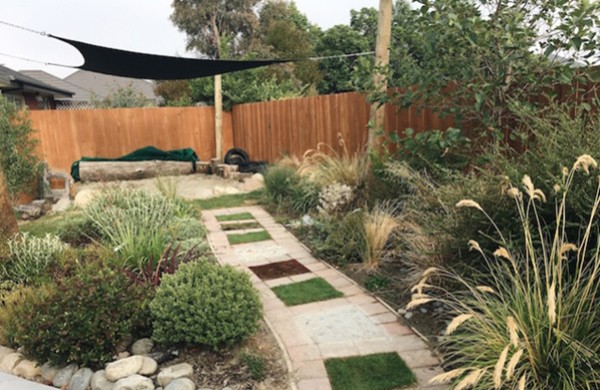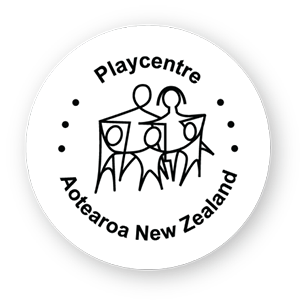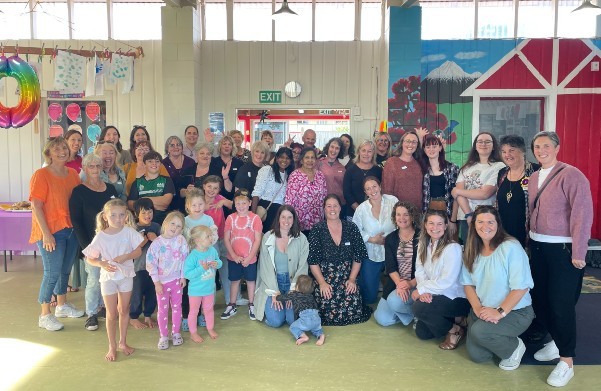
Inspired by a blog post shared on their facebook page, members of Rangiora Playcentre recently decided to make a sensory walkway for their centre. With the help of the Playcentre community and the generosity of Woodend Nursery, they’ve since created something truly special. Playcentre parent Esther Small filled me in on the details of the project.
The sensory walkway provides a range of textures, scents and surfaces for children to explore, bringing both a welcome bit of wilderness and a huge opportunity for learning to outdoor design. Rangiora deliberately chose a garden path play area to be appreciated by all ages so that everyone in the community could enjoy it.To begin with members of Rangiora Playcentre brainstormed ideas before the site was measured so they could determine what resources were needed. Esther then made a sketch of what the walkway would look like.
The resources required were considerable. Esther mentions pavers, cement, wooden half rounds, river stones, pebbles, a bristle doormat, and a multitude of plants, as well as the numerous bits and pieces required to lay paving.
The Rangiora Playcentre community benefited from the knowledge and skills of their community group. Esther’s husband “makes driveways and paths for a living” so she quickly signed him up to help create the walkway.
Several working bees were held to help with the construction of the walkway. There was a surprising amount of work involved but there were tasks to suit a variety of skills.
A lot of the plants chosen by the group are edible. Thyme and chamomile feature underfoot in the walkway but blueberries, cranberries, orange raspberries, mini honeydew melons, rosemary are planted in the area surrounding the walkway, making for a delicious trip around the garden.
The effort the community put in making the path is definitely paying off. The children love their new sensory walkway. They enjoy “running up it barefoot to the sandpit, or sitting and exploring the textures” Esther says. Children of “all ages seem to like the path”, she continues. The “older children like helping to water the plants”.
A quick google image search uncovers a range of awesome landscaping possibilities for any centre keen to create a sensory garden, while Pinterest is full of equally inspiring ideas.
Esther suggests that other centres interested in creating something similar should hold several working bees to get the bulk of the work completed. They should also ask around local businesses to see if any are willing to donate plants or materials.
Esther says that Woodend Nursery “were very generous in donating edible plants for us to use in the path and surrounding area. We had enough plants left over to add to our mini orchard and other areas at the centre”.
You can find out more information about Woodend Nursery here. More information about Rangiora Playcentre can be found here.
Frances Martin




